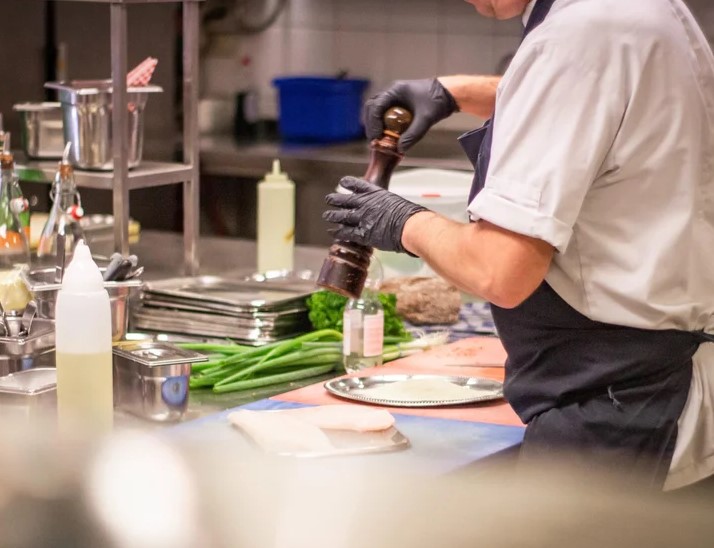In the bustling world of culinary arts, the role of a cook extends beyond the sizzling pans and aromatic spices. Crafting a compelling cook job description is paramount in attracting the right talent to your kitchen. Let’s dive into the intricacies of what makes a cook job description stand out and how it contributes to the success of your culinary team.
I. Introduction
In the vast landscape of the culinary industry, a cook job description serves as the cornerstone for building a skilled and cohesive kitchen team. It goes beyond listing tasks; it paints a vivid picture of the dynamic role a cook plays in the gastronomic world. But why is it so crucial?
II. Key Responsibilities of a Cook
1. Overview of the Cooking Process
Cooking is an art, and a cook’s primary responsibility is to bring that art to life. From preparing ingredients to mastering cooking techniques, the devil is in the details.
2. The Importance of Following Recipes
Precision is key in the kitchen. Highlighting the significance of adhering to recipes ensures consistency in taste and quality.
III. Required Skills and Qualifications
1. Types of Cuisines and Cooking Techniques
A skilled cook should be well-versed in various cuisines and cooking methods, adding versatility to the kitchen.
2. Multitasking in a Fast-Paced Kitchen Environment
Time management and multitasking are essential skills, especially when the kitchen is a whirlwind of activity.
IV. Importance of Team Collaboration
1. Communication and Coordination in a Culinary Team
In a bustling kitchen, effective communication and teamwork are the secret ingredients to success.
V. Adaptability in the Kitchen
1. Handling Unexpected Challenges
Culinary landscapes can be unpredictable. Cooks need to adapt swiftly to unexpected challenges without compromising quality.
2. Remaining Flexible in a Dynamic Kitchen Environment
Flexibility is not just about ingredients; it’s about embracing change in a fast-paced culinary world.
VI. Customer Interaction
1. Balancing Kitchen Responsibilities with Customer Interaction
In open kitchen settings, cooks often engage with customers. Finding the right balance is an art in itself.
VII. Advancement Opportunities
1. Paths for Advancement Within the Kitchen Hierarchy
A well-crafted job description should hint at the growth prospects within the culinary hierarchy, inspiring ambition in potential candidates.
VIII. Crafting an Engaging Cook Job Description
1. How to Make a Job Description Appealing to Potential Candidates
The language used should not just list duties but should entice aspiring cooks by showcasing the excitement of the kitchen.
2. Importance of Setting Clear Expectations for Prospective Cooks
Clarity about the work environment and expectations sets the stage for a successful collaboration.
IX. Attracting the Right Candidates
1. Finding the Right Platforms to Reach Potential Candidates
Utilizing appropriate job boards and online platforms is crucial to reaching a wide and relevant audience.
2. Building Connections to Attract Experienced Cooks
Networking within the culinary community can bring forth experienced and passionate cooks to your kitchen.
X. Interviewing Tips for Hiring Managers
1. Identifying Key Skills and Experiences During Interviews
Asking insightful questions helps in identifying the right skills and experiences in potential candidates.
2. Assessing Interpersonal Skills and Teamwork
Evaluating cultural fit within the kitchen team ensures a harmonious work environment.
XI. Retention Strategies for Culinary Staff
1. Creating a Positive Work Culture
A positive work culture is not just attractive; it’s essential for retaining skilled culinary professionals.
2. Ongoing Training and Growth Opportunities for Cooks
Investing in the growth of your team through training ensures their commitment to the kitchen.
XII. Real-life Examples
1. Inspiring Aspiring Cooks with Real-life Achievements
Sharing success stories within your culinary team adds a human touch to the job description.
XIII. Challenges in the Culinary World
1. How Cooks Can Overcome Obstacles in Their Career
Addressing common challenges in the kitchen prepares aspiring cooks for the realities of the culinary world.
XIV. Staying Updated with Culinary Trends
1. The Importance of Staying Informed About Industry Trends
Innovation is the heart of the culinary world. Cooks who stay updated with trends bring fresh perspectives to the kitchen.
XV. Conclusion
Crafting a cook job description is an art in itself. It’s not merely a list of duties but a glimpse into the vibrant world of culinary arts. By creating an engaging and informative job description, you set the stage for attracting passionate cooks who can contribute to the success of your kitchen.
Get Access Now: https://bit.ly/J_Umma
FAQs about Cook Job Descriptions
- What should be the primary focus when crafting a cook job description?
The primary focus should be on showcasing the excitement and challenges of the kitchen while clearly outlining expectations. - How important is adaptability for a cook in a fast-paced kitchen environment?
Adaptability is crucial, as cooks need to handle unexpected challenges and remain flexible in a dynamic culinary setting. - What role does teamwork play in a successful kitchen?
Effective communication and collaboration among kitchen staff are essential for a harmonious and successful culinary team. - How can hiring managers attract experienced cooks to their kitchens?
Networking within the culinary community and utilizing appropriate job boards can help attract experienced cooks. - Why is staying updated with culinary trends important for cooks?
Staying informed about industry trends ensures that cooks bring fresh and innovative ideas to the kitchen, enhancing the overall culinary experience.

